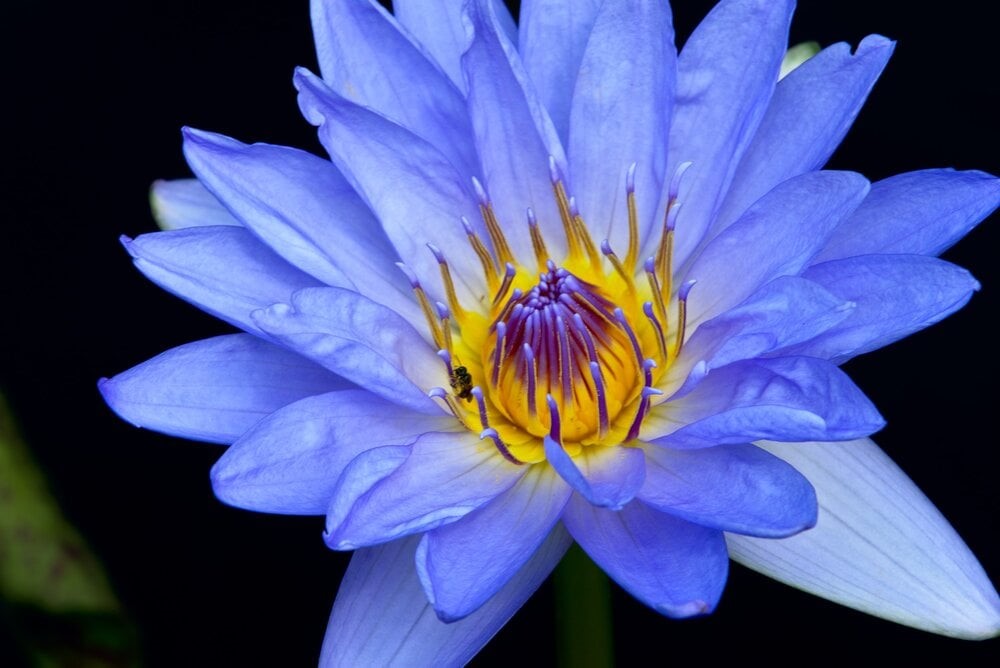Unveiling the Secrets of Egypt’s Blue Lotus: Where Ancient Magic Meets Modern Science
The blue lotus, a plant deeply revered in Egyptian mythology, is often marketed online as a product that induces relaxation or psychedelic effects. However, these modern claims differ significantly from its ancient uses, as revealed by a UC Berkeley student researcher. The blue lotus, famously found in King Tut’s tomb in 1922 and frequently depicted on ancient papyrus, has long been associated with hallucination and sensual rituals. Researchers have speculated that its flowers, when soaked in wine, may have had mind-altering properties used in ceremonies dating back over 3,000 years.

Figure 1. Liam McEvoy's Study of the Egyptian Blue Lotus and Its Online Counterparts
Liam McEvoy, a UC Berkeley anthropology student, has discovered a significant discrepancy between the blue lotus used in ancient Egypt and the plant marketed online today. While modern versions of the plant are sold as relaxing or psychedelic products, McEvoy’s research reveals that they are entirely different species. In collaboration with the UC Berkeley Center for the Science of Psychedelics, McEvoy compared the authentic Nymphaea caerulea, the ancient Egyptian blue lotus, with samples from online marketplaces like Etsy [1]. His study challenges longstanding misconceptions in Egyptology about how the blue lotus was consumed, pointing to the prevalence of pseudoscience in plant-related marketing. McEvoy is dedicated to uncovering the true story behind the plant and addressing the misinformation that fuels profit in this field. Figure 1 shows Liam McEvoy's Study of the Egyptian Blue Lotus and Its Online Counterparts.
A Personal Journey Inspired by a YouTube Documentary
McEvoy’s fascination with the blue lotus began during high school when he watched a 1998 BBC series, Sacred Weeds. The episode explored the idea that the blue lotus might have been a psychedelic plant used by ancient Egyptians, featuring a questionable experiment where volunteers drank wine steeped in lily petals and experienced euphoric effects. This sparked McEvoy’s curiosity about whether the flower in the documentary was the same as the Egyptian blue lotus, known for its distinct appearance and cultural significance. As he delved deeper into his studies at UC Berkeley, McEvoy uncovered the blue lotus’s prominent role in ancient Egyptian rituals and began questioning whether the flowers sold online were the same as those from Egypt. He also wanted to explore how different processing methods affected the release of the psychoactive compound nuciferine that causes the plant’s euphoric effects.
Acquiring the True Egyptian Blue Lotus
Finding the authentic Egyptian blue lotus proved challenging for McEvoy, as the plant has become rare due to the environmental changes caused by the Aswan Dam. It is now considered endangered. Although the UC Botanical Garden holds a wide range of plants, it lacked the Egyptian blue lotus, and other botanical gardens were unable to provide samples. McEvoy turned to Reddit for help, connecting with a person in Arizona who sent him a living plant that was confirmed to be legitimate. He also purchased dried petals from Etsy.
With the help of chemistry experts, McEvoy compared the chemical composition of both samples using mass spectrometry. The verified Egyptian blue lotus had significantly higher levels of the psychoactive compound nuciferine than the flowers purchased online, confirming that the online offerings were not the same species. McEvoy concluded that the flowers sold online were likely a visually similar, but non-psychoactive, water lily. He emphasized that the Egyptian blue lotus is a unique plant, distinct from other varieties sold online.
Reexamining Ancient Consumption Practices
McEvoy's research led him to explore whether the psychedelic compounds in the authentic Egyptian blue lotus could be extracted by soaking the flowers in red wine, as some have suggested [2]. However, he discovered that the flower’s waxy exterior made it difficult for nuciferine, a key psychoactive alkaloid, to dissolve in wine. Instead, McEvoy hypothesized that the ancient Egyptians likely created an infused oil, which was then added to the wine, allowing the fat-soluble alkaloid to fully dissolve.
This new insight into ancient consumption practices challenges common perceptions of both ancient Egyptian rituals and modern-day, lotus-based wellness products sold online. McEvoy plans further experiments to validate his hypothesis, including using liquid chromatography to break down the flower’s chemical components and conducting chemical testing on a 3,000-year-old Egyptian goblet to search for traces of fat molecules from the infused oil.
McEvoy sees his work as an example of how modern science and ancient traditions can intersect, offering new insights into the psychedelic properties of the blue lotus and enriching our understanding of ancient practices.
References:
- https://www.ynetnews.com/travel/article/bkwh007unje
- https://scitechdaily.com/ancient-magic-meets-modern-science-researchers-unravel-secrets-of-egypts-blue-lotus/
Cite this article:
Janani R (2025), Unveiling the Secrets of Egypt’s Blue Lotus: Where Ancient Magic Meets Modern Science, AnaTechMaz, pp.1117

